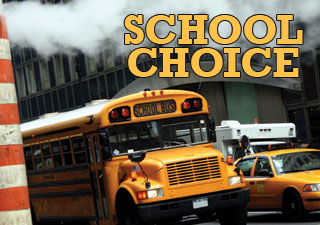Media
WIFM? All the Difference in the World
 As Gov. Corbett and the General Assembly consider a package of education reform bills, some legislators are asking “What’s in it for me?” The WIFM question isn’t necessarily selfish or self-interested, but given the limited scope of the voucher component – it applies only to schools scoring in the lowest 5 percent on state tests and is available only to low-income students – it deserves to be answered. Here are three answers:
As Gov. Corbett and the General Assembly consider a package of education reform bills, some legislators are asking “What’s in it for me?” The WIFM question isn’t necessarily selfish or self-interested, but given the limited scope of the voucher component – it applies only to schools scoring in the lowest 5 percent on state tests and is available only to low-income students – it deserves to be answered. Here are three answers:
1. Expansion of the EITC: The Educational Improvement Tax Credit is providing scholarships to nearly 40,000 students throughout the Commonwealth. The average scholarship amount is $1,100, and the average family income of those receiving a scholarship is $29,000 – which is below the qualifying level of for the voucher. The combination of low-income vouchers and expanded EITC – from $75 million to $100 million – means many more parents currently unable to exercise school choice will be able to access a scholarship from the EITC program. In short, the voucher component frees up more EITC money for children in your legislative district.
2. Reduction of Welfare & Corrections Costs: When we fail to prepare a student to go to Penn State, we are in essence preparing them for the state pen – at a cost to the taxpayer of more than $35,000 per inmate, per year. And if they don’t head to the pokey, they are likely to be in a welfare line. In 2009, more than 35,000 students did not graduate from Pennsylvania’s high schools. The lost lifetime earnings for that class of dropouts alone? More than $9.1 billion. The good news is that school choice doesn’t “cost” taxpayers more. Indeed, school choice saves. It saves children’s lives and it saves taxpayers’ money.
3. It is a Moral Imperative: Children are trapped in violent, failing schools through no fault of their own. Low-income parents, who care for their children as much as you and I do, lack educational opportunities. Yet they can’t afford tuition at a safer, higher performing private school or afford to move to a better public school. They are crying for your help.
As one legislator recently said to me, “It’s like saving that one starfish.” What was he referring to? It’s the story about the traveling businessman who left his hotel one morning to take a stroll along the beach. He came upon countless starfish washed up from high tide the night before. They were all struggling to make their way back to the ocean. He knew they would all be baked by the sun in a short while. He wished there was something he could do but there were thousands, and there was no way he could save them all. So, he walked on.
Further down the beach, he came upon a small boy who was frantically picking up the starfish, one at a time, throwing them like Frisbees back into the ocean, trying to save as many as possible.
The man, realizing what the boy was trying to do, felt responsible to share a harsh life lesson. He walked up to the boy and said, “What you are doing is honorable, but you can’t save them all. There are thousands. The sun is getting hot and they’ll soon all die. You might as well go on your way and play. You really can’t make a difference here.”
The boy stared at the businessman for a moment. Then he picked up another starfish, flung it into the ocean as far as he could throw, and said, “Well, I just made all the difference for that one.”
WIFM? The opportunity to make all the difference for that one child trapped in a violent, failing school.